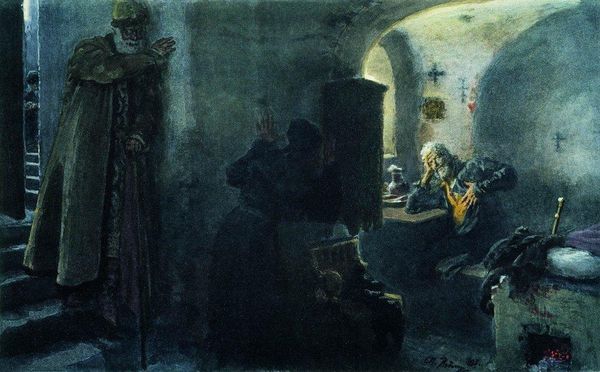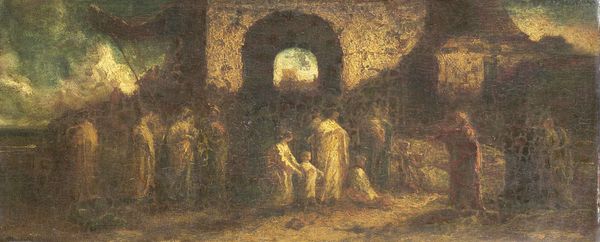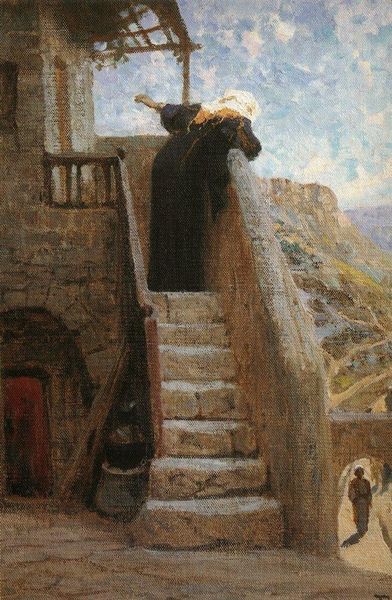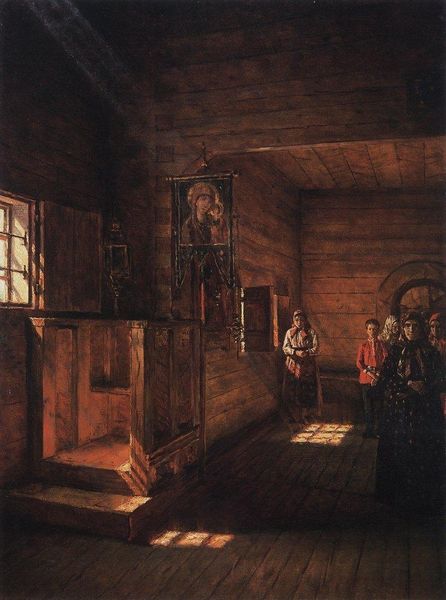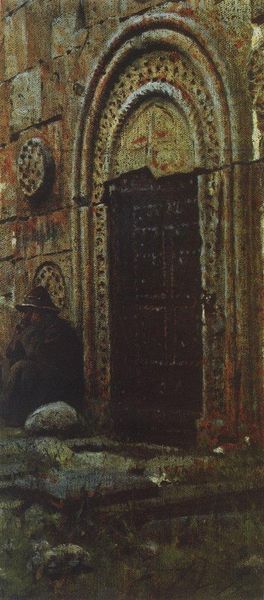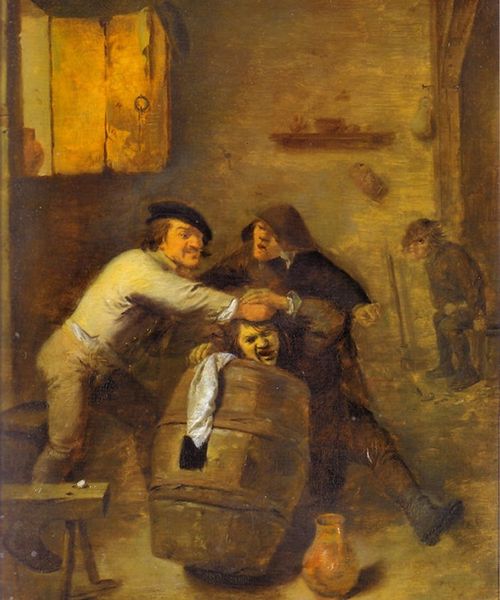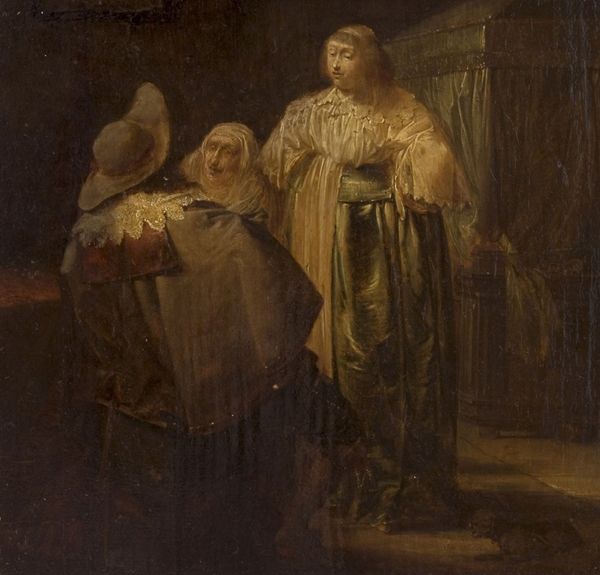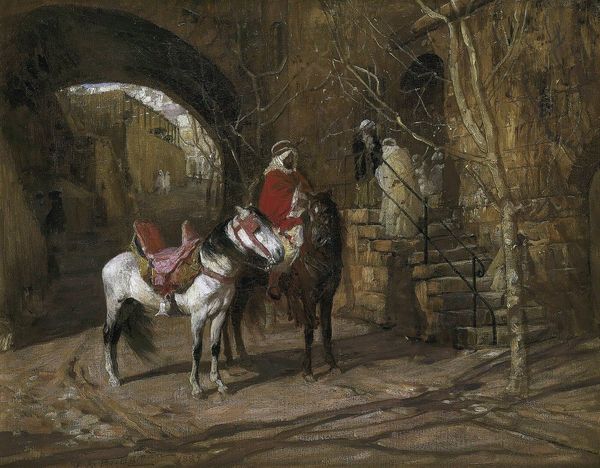
Copyright: Public domain
Editor: This is Vasily Polenov's "The Arrest of a Huguenot," painted in 1875, using oil paints. It feels like a very loaded and somber scene, staged almost like a theatrical play, with that stone archway. How do you interpret this work? Curator: The power of this painting resides in its subtle challenge to narratives of religious persecution. Polenov presents not just the historical event, but invites us to consider the complex social dynamics at play. Consider the historical backdrop: Huguenots, as French Protestants, faced severe oppression. How does Polenov's representation either challenge or reinforce existing power dynamics? Editor: I hadn't really thought about the power dynamics! It just seemed like a sad moment, someone getting arrested. Curator: Exactly! Now, look at the figures. Who seems to hold the gaze, and what does their expression convey? Think about how gender might play a role here. Is the painting challenging our assumptions about heroism, victimhood, and resilience in the face of oppression? Editor: I see what you mean! The woman's gaze, though downcast, still feels defiant. And her being accompanied by an older woman seems important. Curator: Precisely. Now consider the staging and its resemblance to theater. The artist consciously framed a scene, to prompt critical reflections on narratives of religious and political conflict. So, what are we, as viewers, implicated in when encountering a scene like this? Editor: That's so much to consider. I see the painting differently now—less as a simple depiction and more as a complex statement about resilience and power. Curator: Indeed. And through that lens, "The Arrest of a Huguenot" ceases to be just history, but a potent reminder of our responsibilities in dismantling systems of oppression today.
Comments
No comments
Be the first to comment and join the conversation on the ultimate creative platform.

